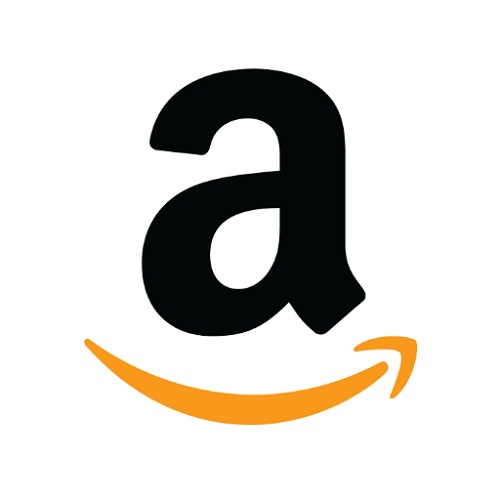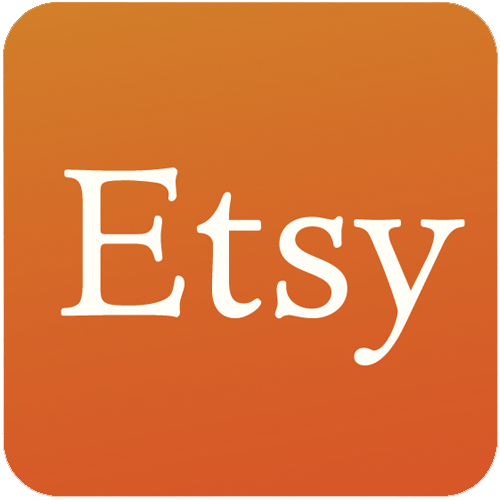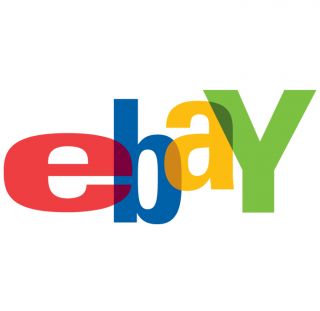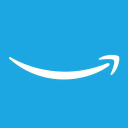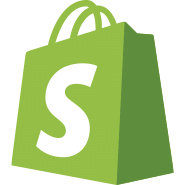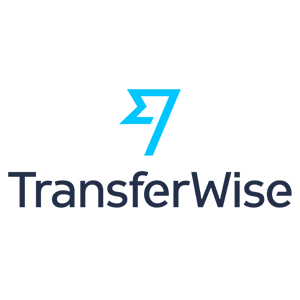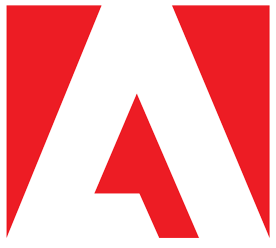How I Started A Successful Brand Selling Vintage Patches On Etsy
Hello! Who are you and what business did you start?
Hi! My name is Mike, and I’m a serial entrepreneur living in Montreal, Canada. I run Vagabond Heart, a company that makes modern vintage-inspired travel patches and stickers to help your luggage stand out on a the carousel.
I started the company just under two years ago, and we’ve been growing at a 100+% growth rate ever since. Currently we sell just over $5,000 per month worth of patches and stickers.

What's your backstory and how did you come up with the idea?
As I mentioned above, I’m a serial entrepreneur, and a lifelong maker. I’ve been selling online since the early 2000’s, well before Shopify made it easy, even before Amazon existed. In the past I’ve designed typefaces, ran a literary magazine, published books, sold vintage menswear, and even built and sold wooden furniture online.
The idea for Vagabond Heart came to me three years ago when I was on a winter-long vacation in a small town in Mexico, which I loved, except for the fact that I didn’t really have anything to do with my time. I thought to myself, “If i’m going to come down here every winter, I need a project to keep me busy.”
The idea was a combination of my interest in vintage clothing, style, and old movies, with my love of menswear and fashion, and of course, travel. What I wanted was a way to make my normal looking duffel bag look like an updated version of the luggage you’d see on a trans-Atlantic crossing in the 1920’s, or on the runway in Casablanca.
I wanted to have patches from Paris and Rome and Cuba plastered all over, but I didn’t want the readily available (and boring) flag patches, and I didn’t want something too retro and costumey.

Take us through the process of designing, prototyping, and manufacturing your first product.
I learned a lot from being a book and magazine editor that helped with the design process.
My strategy:* find the right person to do the design work and don’t get in their way!*
I had worked with the designer Ryan Brinkerhoff a few years before on a small project and it had turned out really well. I thought his style fit what I was looking for so I reached out and explained the concept and he was really excited to do it.
As far as the actual design process goes, I make a list of the designs I want done, usually in batches of ten. I send Ryan as much reference material as I can, from online photos to poorly done doodles, and some notes on the vibe or the colors or anything else I can think of, and then I let Ryan work his magic.

As far as design goes, I think you should do the hard work up front of finding the right person who understands your vision. Then the actual design and revision process becomes a breeze because everyone is on the same page.

Fortunately, patches are a pretty cheap thing to prototype. I emailed about 25 or 30 suppliers on AliBaba, then sorted them by price per piece, and also by MOQ. I chose a company with a competitive price, about $1.50 per piece, who would allow me to order only 50 pieces of each of my 10 original designs, so 500 pieces in all to start. From when I sent them the payment (upfront) to when I received my product was probably about a month.
As the company grew I eventually switched suppliers to one that required a higher MOQ, but made a higher quality product. At this point I was sure I could sell what I ordered, and my orders per design have crept from 50 pieces, to 100, to 500.
Describe the process of launching the business.
The main store, VagabondHeart.co is hosted on Shopify. I chose Shopify because while it isn’t the cheapest option, it’s the leader in providing ecommerce stores, and with that you get a lot of bonuses, like the giant number of third party apps you can install, and the tons of podcasts and blogs you can read to get help with the technical aspects.
The best place you can be is on a platform that has already got people on it, actively trying to buy things.
I also started out by uploading everything to both Etsy and Ebay. It was kind of an afterthought at the time, but Etsy has turned out to be our best channel for sales.
I never really had a proper launch to the business. I started off with my 500 patches, and sort of put them up online to gauge interest, and pretty quickly enough of them had sold that I needed to get a reorder sent in and then it made sense to make 10 more designs, and then a few more and the next thing I knew I was at 50 designs and 500 orders a month.
The main thing I’ve learned is the importance of a marketplace like Etsy. What I didn’t realize originally is that the best place you can be is on a platform that has already got people on it, actively trying to buy things.
This has also been true about selling on Amazon. When we launched on Amazon in January of this year we went from zero sales to basically twinning what we were selling on Etsy in about 3 weeks.

Our Dublin patch.
Since launch, what has worked to attract and retain customers?
Growth for Vagabond Heart has come primarily through expanding our product line. I started out with a test run of 10 designs, and now we’re up to 50 different locations. That allows us to get a higher average order value, because now someone looking for a Barcelona patch can also find a Lisbon patch while they’re on the site.
There’s a great advantage to selling a product that people are already looking for. People on Amazon already want a “Tokyo Patch,” I’ve just come on to the scene and am offering them a better one than was previously available.
Last year, we started offering all of the designs as a sticker as well, for hard sided wheelie type suitcases, and so that doubled the number of SKUs in the store in one day and widened the potential audience.
As I mentioned above, just this year we’ve added Fulfilled by Amazon sales, and seen the number of orders on Amazon go from zero to 250 a month in 3 months, without any advertising.
The downsides to this are
- a lower profit margin because of the Amazon fees, and
- the need to keep more stock on hand, because it can be labour intensive and costly to ship to the Amazon warehouses, so we need to send them large quantities of product all at once.
Knowing what I know now about Amazon sales and fees, if I was choosing Amazon as my #1 sales channel I would try to create a product with a higher retail sales price. Right now my Amazon fees take up about 30% of my sales price, but if you sold something worth more the fees don’t scale one to one with the price, so you could end up with closer to a 10-15% Amazon fee. I think the sweet spot is probably something in the $25-$50 range, cheap enough that it’s still an impulse buy, but priced at a point where you aren’t having the Amazon fees take up too much of your profit margin.
We don’t do much advertising, save for the automated advertising on Etsy where you can set your maximum bid and their algorithm takes care of everything else. This is a great place for people to start to learn about advertising, as you can set a very simple max budget and watch as the algorithm picks your keywords for you, before you try doing something similar yourself on Facebook.
The main marketing push for me is our mailing list. Currently the list is at 2,000 subscribers, with a 30% open rate. I try not to spam, but the nature of our product is that if you like one of our designs, you probably want more, as long as it’s a place you’ve been to.
Our best responses come from the 5 or 6 emails a year where we say “Hey, we’ve got new designs in the store! Have you been to X or Y?” Those tend to get a 50+% open rate and a 25+% click rate.

A simple email launching our Las Vegas patch.
How are you doing today and what does the future look like?
While the company started off slow, it’s been essentially profitable from day one. In the beginning, I was packaging and mailing each order by hand, and we’re just now transitioning to having a fulfillment warehouse take care of all of our shipping.
When we started, I bought the patches separately, printed packaging separately, and bought plastic bags separately, because it was more affordable to buy them like that in small quantities. Eventually we transitioned to ordering large enough numbers of patches at once that it became affordable to have the embroidery company package everything in advance.
Currently we’re selling about a 40%-40%-20% split between Amazon, Etsy, and our own store. The plan for the next 4 months is to tidy up the loose threads in the business, optimise our listings, redo all of our photography and visual elements, and get everything in order before expanding the collection in the fall in time for Q4 and the holiday season.

Our Lisbon patch and the streetcars that inspired it.
Through starting the business, have you learned anything particularly helpful or advantageous?
The one lesson I’ve taken with me through all my businesses is the idea of bootstrapping, of not buying anything until you absolutely need it.
Once you have your idea for a product (or service) come up with a Minimum Viable Product and test interest on that. For me, I was able to produce a small number of my actual product, which meant if the product had been a total failure I would have only been out about $1000 in unsold product.
If you can’t do that you can create a website for your product with a BUY NOW button that goes to an error page or a “sold out” notification, and you can judge the interest by seeing how many people clicked to buy.
If you want to write a book, write a shorter version of it, the first chapter or a framework, and offer it up as a freebie. If thousands of people want your freebie, 10% of them will probably buy the full book off you 6 months from now when you’re finished writing it.
What platform/tools do you use for your business?
The main apps I use with Shopify are Affiliately, for setting up affiliate accounts for Instagram influencers, and Jilt, which sends out my abandoned cart emails.
I also have an app installed called Give & Grow, which allows me to automatically donate a percentage of my sales to charity. I chose Doctors Without Borders an organisation that provides medical care in disadvantaged places like war torn countries or areas that have suffered a natural disaster. The app adds a widget to your Shopify store that shows shoppers how much you’ve donated.
Etsy has the Etsy Sellers App, which I have on my phone, that allows me to track sales and respond to Etsy Conversations on the go.

Our Portland patch.
What have been the most influential books, podcasts, or other resources?
I’m sure this gets mentioned a lot, but when it came out, over ten years ago, I read The Four Hour Work Week by Tim Ferriss and it really changed how I thought about a lot of things, not just work and business.
A lot of the lessons in it have been so incorporated into the world of online sales that it might not seem revolutionary to someone reading it today, the way the CGI in Jurassic Park doesn’t drop jaws in 2019, but there’s a lot in there. I think it’s probably less helpful for someone starting out than it is for someone who has their business running and wants to make it easier to run, but I’d probably recommend someone reading it before they start their business anyway, because that’s when you make the decisions that will affect how easy it is to automate your business down the road.
Seth Godin’s books (and his blog and his podcast) are great as well. Less for technical help on how to start a business or how to promote a website, and more for the Big Thinking part of it. Why are you doing what you’re doing? What makes your business or product special? Who is it for and why are they going to love it? It’s this sort of thinking that helped me niche down until I found a product I was interested in making that no one else had made yet.
I listen to about 20 different podcasts for business help. I would say some of them are good but have a lot of fluff episodes, or interviews with someone peddling their Shopify plugin, which might or might not be useful. My favourites, with the most useful content, would be How to Quit Your Job by Steve Chou and Ecom Crew with Mike Jackness and Dave Bryant.
Advice for other entrepreneurs who want to get started or are just starting out?
Something I’ve learned with this project is that there’s a great advantage to selling a product that people are already looking for. People on Amazon already want a “Tokyo Patch,” I’ve just come on to the scene and am offering them a better one than was previously available. People are probably already searching for “joke golf t-shirt” or “retro map posters.”
If you have a product like this you don’t have to spend as much on advertising, you just have to have the best available product. The reason there were so many commercials for Snuggies when they first came out is that no one was googling “blanket with arm holes in it.”

Where can we go to learn more?
- The Website: http://www.vagabondheart.co
- Or if you prefer to shop on Etsy: https://www.etsy.com/ca/shop/VagabondHeartCo
- Or on Amazon
- Check us out on Instagram: @VagabondHeartCo
- If you have any new location suggestions for me, or just to say hello, email me at mike@vagabondheart.co
If you have any questions or comments, drop a comment below!

Download the report and join our email newsletter packed with business ideas and money-making opportunities, backed by real-life case studies.

Download the report and join our email newsletter packed with business ideas and money-making opportunities, backed by real-life case studies.

Download the report and join our email newsletter packed with business ideas and money-making opportunities, backed by real-life case studies.

Download the report and join our email newsletter packed with business ideas and money-making opportunities, backed by real-life case studies.

Download the report and join our email newsletter packed with business ideas and money-making opportunities, backed by real-life case studies.

Download the report and join our email newsletter packed with business ideas and money-making opportunities, backed by real-life case studies.

Download the report and join our email newsletter packed with business ideas and money-making opportunities, backed by real-life case studies.

Download the report and join our email newsletter packed with business ideas and money-making opportunities, backed by real-life case studies.

